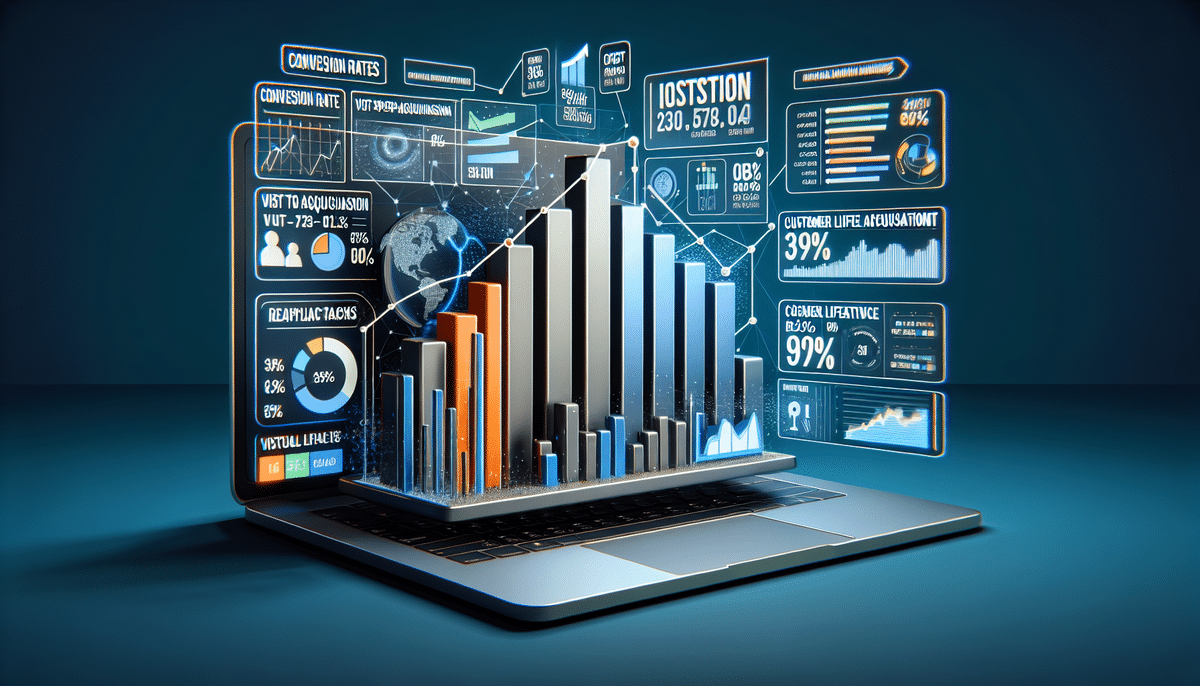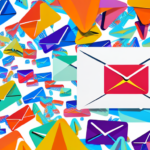Unlock the Power of Email Automation for Your Business
The landscape of marketing has undergone significant transformation, compelling businesses to adopt innovative strategies to stay competitive. One such strategy is email automation, a powerful tool that streamlines marketing efforts by delivering targeted and relevant information to your audience efficiently. In this article, we delve into the benefits of email automation, strategies for creating effective campaigns, and actionable insights to enhance your marketing performance.
Why Email Automation is Essential for Your Business Growth
Email automation is a cornerstone for businesses aiming to scale and enhance their marketing operations. By enabling the creation of personalized messages, it boosts customer engagement and drives higher conversion rates. According to a Campaign Monitor report, automated emails account for 21% of email marketing revenue, underscoring their effectiveness.
Moreover, automation saves time and resources by handling repetitive tasks such as sending welcome emails, follow-ups, and lead nurturing sequences. By automating these processes, businesses can focus on strategic initiatives like content creation and market expansion.
Email automation also offers comprehensive insights into audience behavior. Metrics like open rates, click-through rates, and conversion rates allow for data-driven decision-making, enabling continuous improvement of email campaigns. Additionally, segmentation based on these metrics ensures that messages are highly relevant to specific audience groups, enhancing overall campaign effectiveness.
How to Create Effective Email Campaigns with Automation
Developing effective email campaigns requires a clear strategy and understanding of your audience. Start by setting specific goals, whether it's increasing brand awareness, driving sales, or nurturing leads. Based on these objectives, choose an appropriate automation strategy—be it trigger-based, time-based, or behavior-based.
Personalization is key to successful email automation. Segment your email list to tailor content to different subscriber groups. For instance, use the recipient's name, recommend products based on past purchases, or offer promotions aligned with their browsing history.
Additionally, testing and optimization are crucial. Implement A/B testing for subject lines, email designs, and calls-to-action to determine what resonates best with your audience. Regularly review performance metrics and adjust your strategies to maintain relevance and effectiveness.
Streamline Your Marketing Efforts with Email Automation
Email automation significantly streamlines marketing efforts by handling repetitive tasks, thereby allowing marketers to focus on strategic areas like content development and lead generation. Automation reduces the likelihood of errors and inconsistencies, enhancing overall customer satisfaction.
Personalized messaging is another advantage. By segmenting your email list and crafting targeted campaigns, you ensure that each subscriber receives content tailored to their interests and behaviors. This approach not only boosts engagement but also fosters stronger customer relationships.
Furthermore, email automation provides actionable insights into campaign performance. Monitoring metrics such as open rates and conversion rates helps identify successful strategies and areas needing improvement, ultimately leading to a higher return on investment (ROI).
The Benefits of Automating Your Email Marketing Strategy
Automating your email marketing strategy offers a multitude of benefits, including enhanced lead nurturing, increased customer engagement and retention, and improved efficiency and scalability. Automated emails reach your audience at optimal times, fostering better relationships and driving revenue growth.
One of the standout advantages is the ability to track and analyze customer behavior. Insights into how subscribers interact with your emails—such as open rates and click-through rates—enable the creation of more personalized and relevant content. This personalization leads to higher engagement and conversion rates.
Additionally, automation conserves time and resources by allowing businesses to set up sequences of emails based on triggers like sign-ups or purchases. This ensures a consistent and effective email marketing strategy without the continuous manual effort.
Choosing the Best Email Automation Tool for Your Business Needs
Selecting the right email automation tool is pivotal for achieving business objectives. Key factors to consider include budget, technical expertise, and required features. Popular tools like Mailchimp, HubSpot, and ActiveCampaign offer a range of functionalities to suit different business needs.
Consider the size of your email list, as some tools impose subscriber limits while others offer unlimited subscribers at higher costs. Advanced segmentation and personalization features are also important for businesses with diverse subscriber bases, enabling more targeted and effective campaigns.
How to Segment Your Audience for More Targeted Emails
Effective audience segmentation enhances the precision of your email campaigns. Utilize criteria such as demographics, interests, purchase history, and engagement levels to categorize your audience. This allows for the delivery of personalized experiences, increasing the likelihood of conversion.
Consider the customer journey stage when segmenting. New subscribers may require introductory content, while existing customers might benefit from loyalty rewards or product recommendations. Tailoring messages to each stage guides your audience towards desired actions.
Behavioral segmentation based on website interactions or social media engagement is also effective. For example, targeting users who abandoned their shopping carts with reminder emails can significantly boost conversion rates.
Personalizing Your Emails for Better Customer Engagement
Personalization is a critical component of email automation, directly impacting customer engagement. Utilize recipient names, past purchase data, and other relevant information to craft individualized messages.
Segment your email list based on customer behavior to send targeted content that resonates with specific groups. According to Campaign Monitor, personalized emails deliver six times higher transaction rates.
Implementing dynamic content can further enhance personalization. This technique allows different content to be displayed to different recipients based on their preferences or behaviors, making emails more relevant and engaging.
Creating High-Converting Email Templates for Automated Campaigns
Designing high-converting email templates is essential for maximizing the effectiveness of your automated campaigns. Ensure that templates align with your brand identity and messaging while being optimized for various devices and email clients.
Incorporate personalization elements within your templates, such as personalized greetings and tailored product recommendations. This not only enhances user experience but also increases open and click-through rates.
Utilize clear and compelling calls-to-action (CTAs) to guide recipients towards desired actions. A well-structured template with intuitive navigation can significantly improve conversion rates.
A/B Testing Your Emails to Improve Performance
A/B testing is a valuable method for optimizing email performance. By comparing two variations of an email with a small audience subset, you can determine which version yields better results.
Test elements such as subject lines, email content, layout, and CTAs to identify what resonates most with your audience. For example, a study by Mailchimp found that personalized subject lines can improve open rates by 26%.
Ensure that each test has a clear objective, such as increasing open rates or boosting conversions. Testing one element at a time provides accurate insights into what drives performance improvements.
Key Metrics to Track with Email Automation
Monitoring key metrics is essential for evaluating the success of your email automation campaigns. Important metrics include:
- Open Rates: Indicates how many recipients opened your email.
- Click-Through Rates (CTR): Measures the percentage of recipients who clicked on links within your email.
- Conversion Rates: Tracks the percentage of recipients who completed desired actions, such as making a purchase.
- Revenue Generated: Calculates the total income driven by your email campaigns.
Regularly analyzing these metrics helps identify strengths and areas for improvement, enabling continuous optimization of your email strategies.
Integrating Email Automation with Other Marketing Channels
Integrating email automation with other marketing channels—such as social media, SMS, and website landing pages—creates a unified and cohesive brand experience. This multichannel approach enhances audience engagement and increases the likelihood of conversions.
For instance, combining email marketing with social media campaigns can reinforce your messaging and reach a broader audience. Additionally, integrating with SMS can provide timely updates and prompts, catering to different communication preferences.
Leverage data from various channels to inform your email strategies, ensuring that your campaigns are well-coordinated and effectively targeted.
Tips and Best Practices for Successful Email Automation
To maximize the effectiveness of your email automation efforts, consider the following best practices:
- Set Clear Goals: Define specific objectives for your campaigns to guide your strategy.
- Segment Your Audience: Tailor your messages to different subscriber groups based on relevant criteria.
- Personalize Content: Use personalization elements to make your emails more relevant and engaging.
- Test and Optimize: Conduct regular A/B testing to refine your campaigns and improve performance.
- Track Key Metrics: Monitor essential metrics to assess the effectiveness of your campaigns and identify areas for improvement.
- Avoid Spamming: Ensure that your emails provide value and are sent at appropriate frequencies to prevent subscriber fatigue.
- Compliance: Adhere to data protection regulations such as GDPR and CAN-SPAM to maintain trust and avoid legal issues.
Overcoming Common Challenges in Implementing Email Automation
Implementing email automation can present several challenges, including technical complexities, data management issues, and compliance with regulations. To address these challenges:
- Develop a Solid Plan: Outline your objectives, strategies, and workflows before implementing automation.
- Engage Stakeholders: Involve key team members from different departments to ensure comprehensive input and support.
- Invest in Training: Provide adequate training and resources to your team to effectively utilize automation tools.
- Maintain Data Quality: Ensure accurate and up-to-date data management practices to enhance segmentation and personalization.
- Stay Informed on Regulations: Keep abreast of data protection laws and ensure your practices are compliant.
Maximizing ROI with a Data-Driven Approach to Email Automation
Maximizing ROI is the ultimate objective of any marketing campaign, including email automation. Adopting a data-driven approach allows for informed decision-making and continuous optimization. Key strategies include:
- Track and Analyze Metrics: Regularly monitor performance indicators to assess campaign effectiveness.
- Implement A/B Testing: Use testing to refine subject lines, content, and CTAs, enhancing overall performance.
- Leverage Audience Data: Utilize insights from customer data to inform segmentation and personalization efforts.
- Optimize Campaigns: Continuously adjust your strategies based on data analytics to improve outcomes.
By integrating these strategies, businesses can enhance the efficiency and effectiveness of their email automation efforts, leading to higher ROI and sustained growth.
Conclusion
Email automation stands as a formidable tool for businesses aiming to streamline their marketing efforts and achieve superior results. By adhering to best practices, leveraging data-driven strategies, and selecting the appropriate automation tools, you can foster more targeted and personalized communication with your audience. This not only enhances engagement but also drives revenue growth, positioning your business for sustained success in a competitive marketplace.








